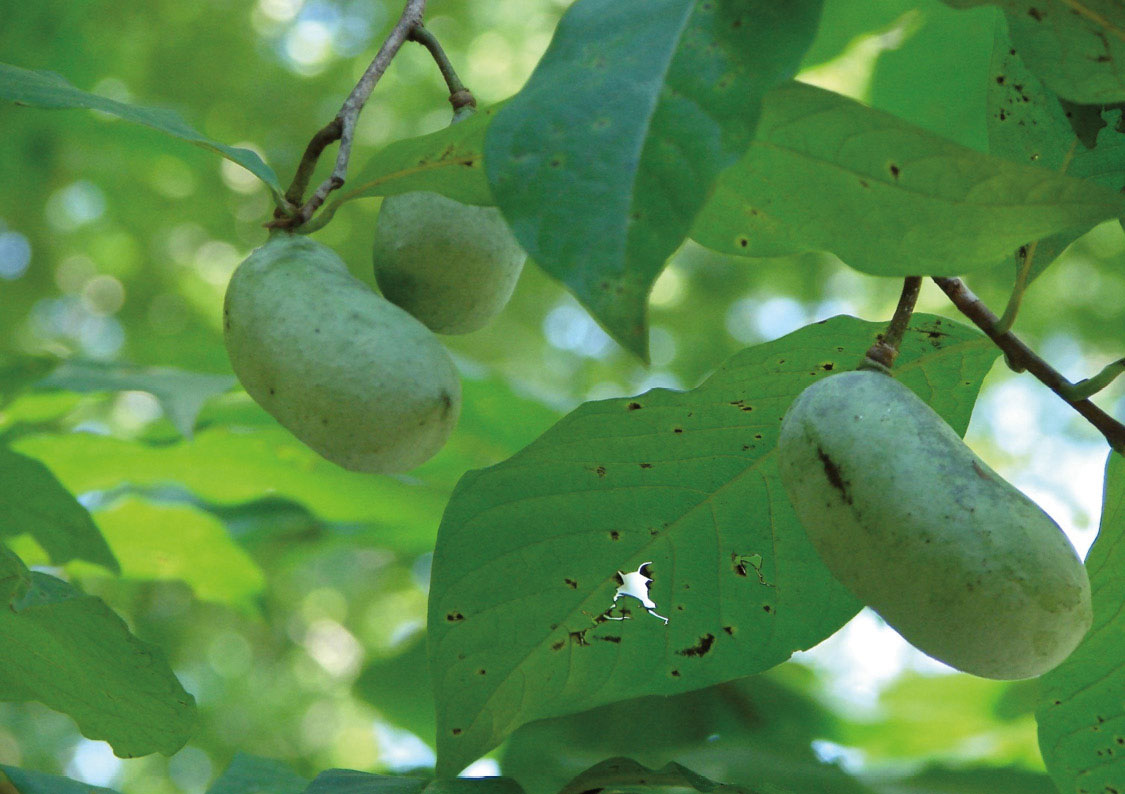 Ask the Steward
Ask the Steward
Question: I have several pawpaw trees in my woods, but I only got 10 pawpaws off of them last year. How can I increase fruiting?
Answer: Did you know that pawpaws are perfect? And, therein lies part of the problem with their low fruit production. If you have pawpaws in your woodlot and have taken a close look at their flowers, I think you’ll agree with me that they are quite unique and beautiful. The maroon to purple blossom contains both male and female flower parts and are therefore ‘perfect’ flowers. However, they are not self-pollinating due to the fact their male and female flower parts mature at different times. To complicate things further, they are generally self-incompatible and require cross pollination with another genetically distinct variety of pawpaw. For woodlots with several clones of pawpaw this may not be the major obstacle to successful pollination and fruit production. However, there’s another glitch to the pawpaw way of life. Unlike other flowers of the forest bees rarely, if ever, visit the pawpaw flower. Its’ faint fetid odor and deep purplish color are specifically designed to attract various fly and beetle species to do the pollination work. Sounds good, but these insects are not very efficient pollinators. How can you help? In an effort to increase pollination, and boost the attraction of flies and beetles some have hung a roadkill, manure or rotting fruit near the trees during flowering. Or, you might consider planting other varieties of pawpaw near existing groves to insure cross-pollination sources. And, for a little fun and family science lesson, try hand pollinating the flowers using a small, soft artist’s brush. Information on this subject is plentiful on the internet. Or, connect with local enthusiasts who are passionate about pawpaw, such as the Indiana Nut and Fruit Growers Association or the Ohio Pawpaw Growers Association.
Question: I’m planting trees next spring or fall and with warming temperatures and climate change should I rethink what species I plant?
Answer: The topics of assisted species migration and range expansion are gaining quite a bit of interest as average temps are forecasted to rise several degrees in the decades ahead and season length between killing frosts expected to also increase. Despite this, the top recommendation on tree planting remains ‘plant the right tree in the right place’. This means matching tree species to your site considering among other things: soil types, drainage, rooting restrictions, slope and aspect. Once these are fully taken into account then you do have some options on introducing species, or seed sources that are normally from areas farther south, or even east and west of your planting. A good example of this would be Cherry Bark Oak, which is a fairly common red oak species found in Southwest Indiana counties. It is a very good timber tree and has great wildlife value. Helping move this species north by planting on suitable sites in Indiana’s more northerly counties, or even farther is certainly feasible. American chestnut, as disease resistant selections become available, may also be worth considering as may other species. When deciding if or what species to help in their migration or range expansion, I recommend looking at selections within 300 miles of your tree planting site, but that varies by species and local ecologic conditions. Further, only include those selections as a portion of your total planting- perhaps 25%. When designing your tree planting do talk with your forester for species that may be suitable for your particular site. They can give you great insights for a successful planting that also considers the potential impacts of climate change.
Dan Ernst is a professional forester and past Assistant State Forester with the Indiana Division of Forestry. He has authored ‘Ask the Steward’ since 1992 and can be reached at foresterdan@yahoo.com
